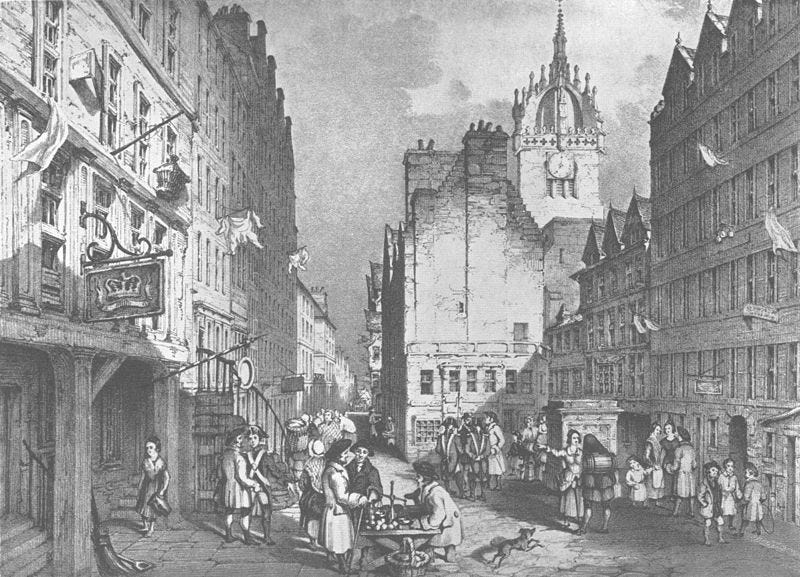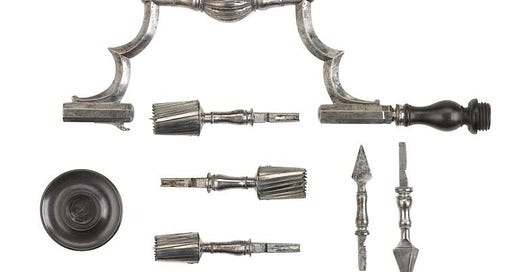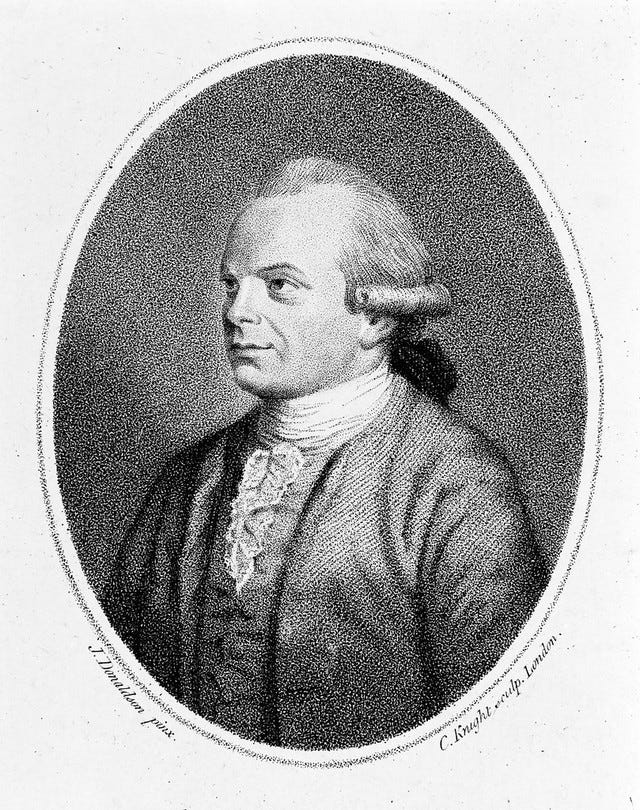An arrow to the skull
The ancient practice of trepanation helped a little girl in 18th-century Edinburgh
Welcome to The Quack Doctor, a weekly publication that unearths stories from medicine’s past. It’s free to subscribe, but if you would like to make a one-off contribution to the coffee supplies that keep me going, I have just set up a Ko-fi page here. Thank you!
If you ever cracked your head open as a child and staggered to the school matron only to be furnished with a wet paper towel and told to soldier on, you might well empathise with a brave little girl called Diana Foreman.
In about 1771, when Diana was seven years old and out alone in her home city of Edinburgh, an arrow inexplicably fell on her from above. The exact circumstances are not known, but it seems to have been an accident rather than an attack. The arrow entered her skull, sticking straight upwards, but was shallow enough for her to pull it out and go home crying.

It is not recorded whether her parents said ‘I’ll give you something to cry about’, but her father considered the wound a very slight scratch and applied some wax that he used in his trade as a shoemaker. Her mother then ordered her out on another errand.
Poor Diana, however, only made it a few steps before keeling over to the right. When seated, she fell to the same side and, just as a further experiment, her mother got her to stand on a chair, which she also fell off.
By now realising that she was genuinely injured, her parents put her to bed. She had no appetite, vomited frequently, and her right arm and leg gradually lost movement until she couldn’t use them at all. A local apothecary treated her for general fever and did not pay much regard to the head wound, although he did apply some ointment.
With no improvement after 10 days, Diana’s father called in John Aitken (d. 1790), a well-known surgeon of the Royal Infirmary and lecturer at Edinburgh medical school. He later recorded the case in Essays and Cases in Surgery (1775).
Aitken couldn’t attend straight away due to assisting a lady in childbirth, but when he did get to Diana, he found her semi-conscious with a flushed face, dilated pupils and an irregular pulse. He did not know about the arrow because no one had thought to mention it.
Due to her symptoms, however, he suspected hydrocephalus internus – a build-up of cerebral fluid causing pressure within the cranium – and asked the family if Diana had complained of pain in her head. The story of the arrow then emerged and, on examining the wound, Aitken found pus issuing from it. Further investigation with a probe revealed a hole in the parietal bone of her skull.
He convinced the family of the seriousness of her condition and told them that, to save her life, it was necessary to ‘give free vent to the matter which was oppressing the brain.’ This meant trepanation – the removal of a portion of the skull.
Trepanation is one of the oldest known surgical procedures, and skulls with evidence of survival after the operation have been found dating back at least 7,000 years. Examples come from all over the world, suggesting that similar procedures developed independently in many cultures.

In the 1870s, French physician and anthropologist Paul Broca (1824-1880) speculated that early trepanation had a demonological aspect – had these ancient peoples believed they were allowing evil spirits to escape from the skull? The idea is still popular and plausible, but also risks viewing the knowledge of ancient civilisations through the lens of 19th-century stereotypes about 'primitives' and 'savages'.
Also plausible is the idea that trepanation was a practical therapeutic skill used to treat injuries. With head wounds a familiar consequence of conflict or accident, practitioners could have observed the course of infection and realised that dead bone would eventually disintegrate (if the patient didn't die in the meantime). Debriding the wound of bone fragments might have emerged as a logical step in the encouragement of healing.
With such a widespread incidence of trepanning, it's no surprise that there were various methods – scraping away at the skull with a sharp flint; boring a circle of holes and prising out the resulting disc; creating a round groove or four straight ones and removing the middle. From about the time of Hippocrates onwards, there were cylindrical instruments that rotated to saw out a circular piece of bone, and that is what Aitken used on Diana Foreman’s skull.
Aitken carried out the operation under the observation of two other Fellows of the College of Surgeons of Edinburgh. After peeling back the skin on Diana’s scalp, he used the existing arrow-hole as a central point for the rotating saw. Removing a circle of bone revealed a small corresponding hole in her brain, from which ‘around two ounces of well-concocted pus issued out.’
Diana had to sleep with her head lowered to help the drainage, and more pus came out over the next few days, but she was otherwise comfortable. During the next week, the paralysis in her right side abated, and she went on to make a good recovery. When Aitken published the case four years later, he reported that she remained in excellent health, and had experienced a bonus cure of the asthma she previously suffered from.
It is sobering to imagine what Diana went through at just seven years old, enduring a life-threatening injury and then a risky surgical procedure in an era before anaesthetics or aseptic precautions. I am glad John Aitken wrote up her case and gave us the chance to appreciate the courage of a little girl whose life would otherwise be unremembered today.







